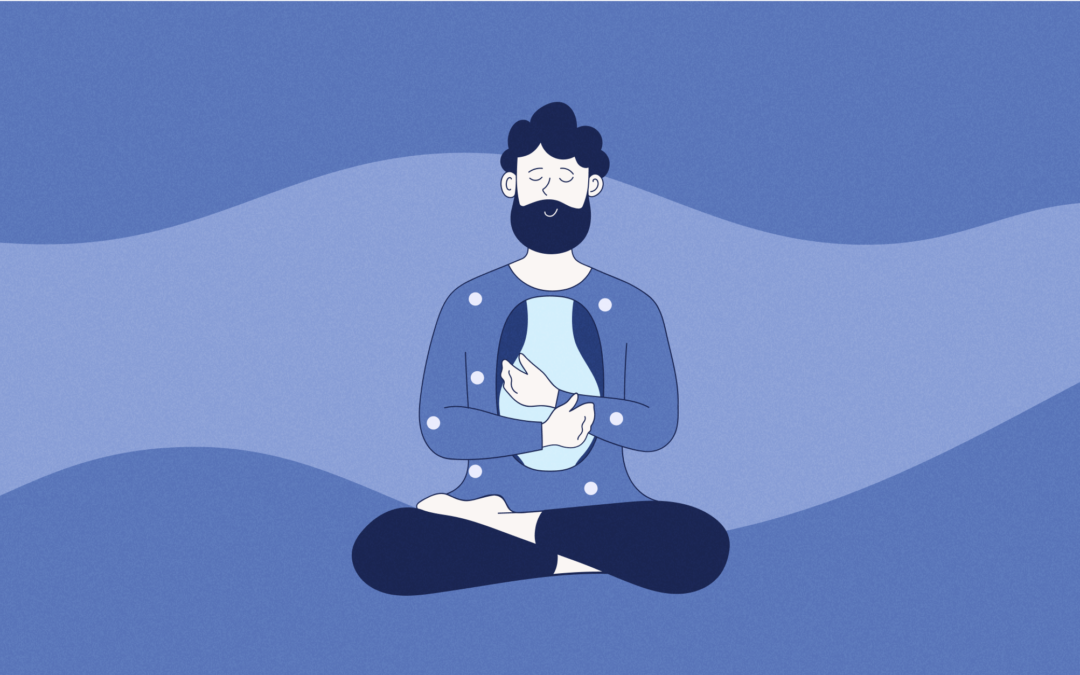
by Baginda Tirtadji | Sunday, February 13, 2022 | Breathing, Research
Breathing is something we do all day and night without even realizing it. In fact, we breathe in and out about 17,000 times a day.[*] Despite being such an inherent part of our existence, many people don’t understand the breathing process or even know why breathing is so essential to life.
In this article, we’ll be taking a deep dive into breathing, exploring how it works and why it’s important, as well as different types of breathing and tips for healthy breathing.
Let’s all take a deep breath—in and out—and get started.
For anyone looking to improve their sleep, Somnox 2 is your science-backed sleep companion that guides you towards slow-paced breathing that helps you fall asleep faster, worry less and wake up rested. 70% of our users improved their sleep quality within 4 weeks. Interested?
How the Respiratory System Works
The respiratory system is the network of organs and tissues that allow you to breathe. The two lungs, which sit to the left and right of the heart, are the primary organs of the respiratory system.[*]
The breathing process (aka respiration) has two major phases: inhalation and exhalation. The inhalation process starts when the diaphragm, the muscle located under your lungs, contracts and moves downward. This increases space in your chest cavity, which allows your lungs to expand.
As your lungs inflate, air enters your nose or mouth and travels down your windpipe to your bronchial tubes, which connect your windpipe to your lungs. As the air reaches your lungs, it enters air sacs called alveoli, which pass the oxygen into your bloodstream.
When you exhale, your diaphragm relaxes and shifts up into your chest cavity. As the space in your chest cavity decreases, carbon dioxide-rich air is pushed out of your lungs and windpipe, and then out of your nose or mouth.
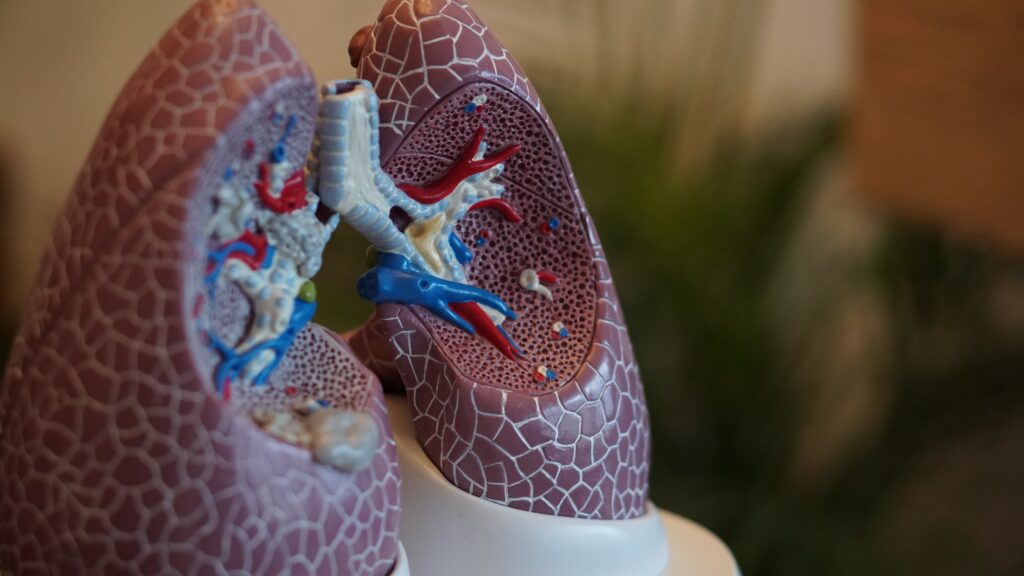
How Your Body Controls Breathing
Inhalation is an active process, meaning muscles are involved. Most of the work of inhalation is done by the diaphragm, the main breathing muscle, and to a lesser extent, the intercostal muscles.
Exhalation, on the other hand, is a passive process, meaning no muscle activity is involved. Exhalation is caused by the natural elastic recoil of the lung tissue and is accompanied by the relaxation of all breathing muscles—similar to a balloon deflating.
While you can consciously inhale and exhale at will, breathing is largely an unconscious process that’s controlled by your brain stem.[*] The brainstem connects the brain to the spinal cord and regulates many automatic bodily processes, including heart rate, blood pressure, reflexes, and breathing.
Your brainstem controls your breathing rate by sensing your body’s need for oxygen, as well as its need to get rid of carbon dioxide, which is a byproduct of cellular respiration.
The Importance of Breathing
Just like food and water, breathing is essential for life. However, while you can go days without water and possibly weeks without food, you can only go a few minutes without breathing.
Why is that? What purpose does breathing serve? The critical nature of breathing is directly linked to the importance of one particular element your body needs every second of every day: oxygen.
Air contains 21 percent oxygen, which you breathe into your lungs.[*] Once inhaled, your lungs pass the oxygen toyour bloodstream, where it’s carried off to your tissues and organs. The cells that make up your tissues and organs then use the oxygen to perform functions that keep you alive.
Breathing also serves as a way to expel carbon dioxide gas, which is a byproduct of cellular respiration.

How Intentional Breathing Can Support Your Body
While breathing is a largely automatic process, you can consciously influence your breathing rate whenever and wherever you’d like.
Intentionally altering your breathing rate allows you to indirectly influence your autonomic nervous system. This is really exciting if you think about it! Consciously slowing your breathing increases the activity of the parasympathetic nervous system (aka “rest and digest”) while reducing the activity of the sympathetic nervous system (aka “fight or flight”).
The parasympathetic nervous system is responsible for the relaxation response and triggers beneficial changes in the body, including a slowed heart rate and reduced blood pressure. When this system is activated, your autonomic nervous system is balanced, which relieves you of anxiety, overwhelm, and restlessness.
In this way, you can use your breath as a tool to calm your body and mind. Research suggests that deep breathing practices can, among other things, soothe anxiety and support restful sleep.[*][*]
To think about it another way, taking deep, diaphragmatic breaths communicates to your brain, “Everything is okay. It’s safe to relax,” in a language it understands.
While diaphragmatic breathing doesn’t require anything but your breath, you can further support your breathing practice with the Somnox 2 Breathe & Sleep Robot, which uses the power of breathing to calm the mind and prepare you for a good night’s sleep.
By simply holding the Somnox 2, you can physically feel a calm breathing rhythm. This will (unconsciously) encourage you to adopt the same soothing rhythm.
Tips for Healthy Breathing
There are several other things you can do to support healthy breathing and, consequently, a healthier you:
- Quit smoking (or don’t start if you don’t smoke). As the number one risk factor of lung cancer and other lung diseases, taking steps to quit smoking is essential.[*] Also, try your best to avoid secondhand smoke.
- Keep active. Regular aerobic exercise strengthens the lungs and keeps them healthy. Aim to get 150 minutes of aerobic exercise per week.
- Maintain a healthy weight: Being overweight increases a person’s risk of breathing difficulties.[*] In addition to exercising, maintain a nutritious diet to support a healthy weight.
- Limit exposure to air pollution. Indoor and outdoor air can contain particles and pollutants that damage your lungs. To keep your lungs healthy, maintain a clean home and stay inside on days when the outdoor air is unhealthy. You can check the outdoor air quality where you live by visiting airnow.gov.
- Practice diaphragmatic breathing exercises. Diaphragmatic breathing exercises will not only help reduce your stress, but can also help strengthen your lungs and diaphragm and make them more efficient.[*]
Breathe Better to Live Better
Breathing is a truly incredible process that we depend on for life. It brings oxygen into our bodies, expels carbon dioxide, and can even be harnessed to relieve stress, anxiety, and sleeplessness.
Breathing isn’t something we often consciously think about, but hopefully after reading this article, you have a greater appreciation for your respiratory system and a better understanding of the superpower that’s available within all of us.
For anyone looking to improve their sleep, Somnox 2 is your science-backed sleep companion that guides you towards slow-paced breathing that helps you fall asleep faster, worry less and wake up rested. 70% of our users improved their sleep quality within 4 weeks.
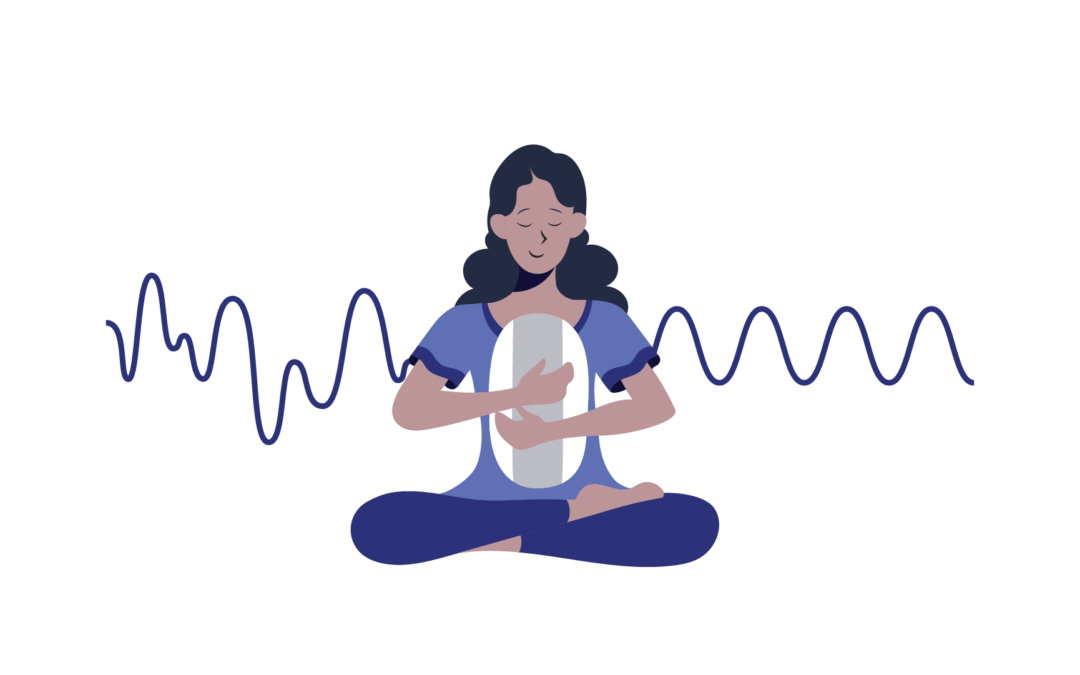
by Baginda Tirtadji | Monday, May 10, 2021 | Breathing, Research
Somnox’ mission is to unlock human potential by improving the sleep of 100 million people by 2030. We are continually working with sleep science experts, neuroscientists and health professionals to ensure that our products live up to this goal. In our last experiment, we investigated how the Sleep Robot supports coherent breathing to calm you down. We observed that coherent breathing exercises with the Somnox Sleep Robot before bedtime and just after waking up aligns your breathing and heart rate, and helps decrease resting heart rate, which are indicators of relaxation. More research into the effects of coherent breathing will be done in future studies.
Somnox is committed to developing products that you can trust. We continually improve our products based upon user experiences and the latest research. Sleep has a large impact on your wellbeing and it is important that we take your health seriously. Therefore, we will keep sharing our learnings with you. Wondering whether Somnox is right for you? Take our quiz and get our free advice.
What is coherent breathing?
You breathe in and breathe out, without actually thinking about it. You unconsciously inhale to let air into your lungs and oxygenate your body’s tissues. What’s unique about breathing is that you can take it under conscious control too. Coherent breathing is all about conscious, slow and rhythmic breathing. Your natural breathing rate ranges from ten to twenty breaths per minute (1). With coherent breathing, you decrease this breathing rate significantly to six breaths per minute. This has been proven to have a relaxing effect on the body and mind (2).
The effect of coherent breathing has something to do with your autonomic nervous system, which can be divided into the sympathetic and parasympathetic nervous system. The sympathetic nervous system controls your stress responses (fight-or-flight) (3,4). The parasympathetic nervous system makes sure your body gets rest for restorative purposes (rest and digest) (3,4). A lower breathing rate and longer exhales lead to parasympathetic effects that initiate a relaxation response (2,5,6). Thus, slow coherent breathing transforms the body from a stressed state into a relaxed state which is favorable for a good night’s sleep (7).
Coherent breathing example: breathe in for four seconds… and breathe out for six seconds… do this breathing exercise for 10 minutes.
How is coherent breathing related to your heartbeat?
What’s interesting, is that coherent breathing impacts your heart rate. While breathing in, your heart rate goes up and while breathing out, your heart rate slightly decreases (see Figure 1 below) (8). This phenomenon is called heart coherence, and is reached during coherent breathing or when experiencing positive emotions, such as love, joy and gratitude. It’s a sign of a happy and healthy body that is resilient to stressful events that can be encountered during the day (9). 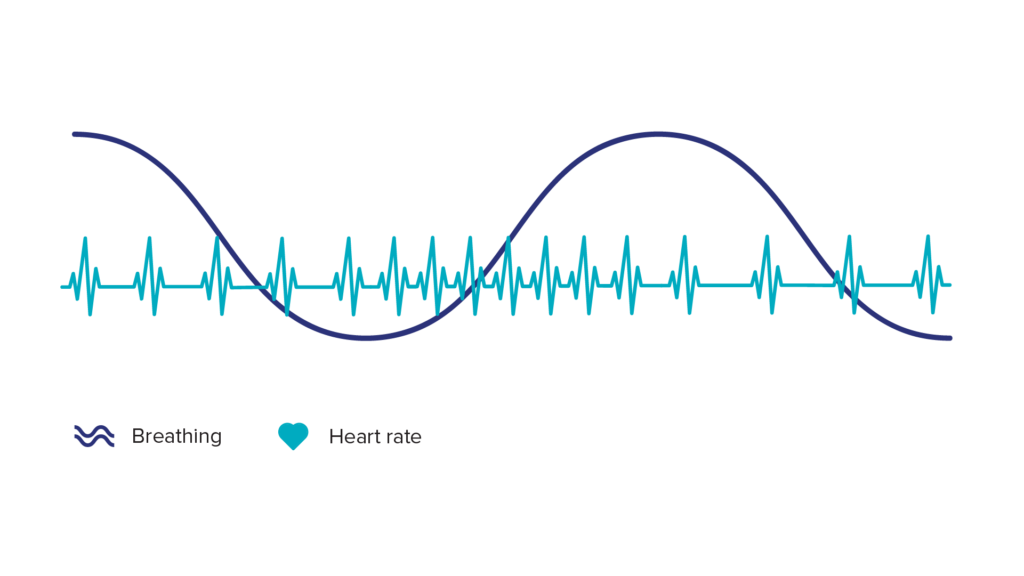
Figure 1: Heart rate goes up while breathing in and heart rate goes down while breathing out. This occurs when you practice coherent breathing and is a sign of a stress-resilient body.
How to do coherent breathing with Somnox?
Coherent breathing can relieve stress and therefore help you fall asleep more easily (9). You can use the Somnox Sleep Robot to do coherent breathing exercises (see Figure 2). We recommend performing these exercises just before going to bed for a good night’s sleep, or just after waking up to start the day peacefully.
The following settings for the Sleep Robot are recommended:
- Program: Napping
- Breathing start rate: 6 breaths per minute
- Breathing end rate: 6 breaths per minute
- Breathing duration: 10-15 minutes
- Select some soothing sounds according to your preference
You can change your breathing settings in the mobile application. More information how to do this can be found here:
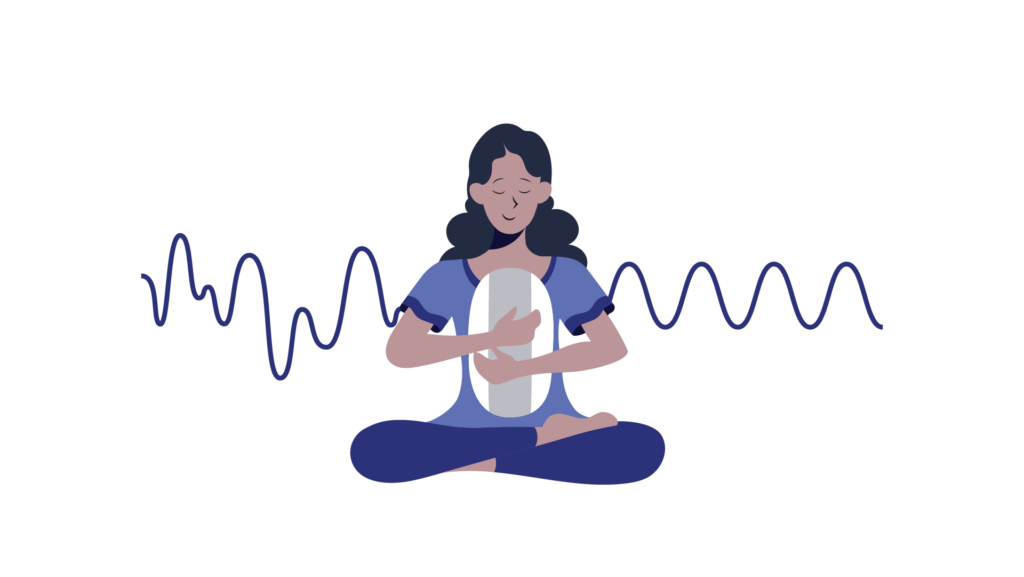
Figure 2: With the Sleep Robot, you can practice coherent breathing which consists of a regular breathing pattern and has a sinus-like effect on heart rate. This is a sign of parasympathetic dominance.
Let’s take a closer look at our experiment
The Somnox Sleep Robot is designed to let go of stress and prepare the mind for sleep with breathing exercises. After all, hyperarousal (an overactive body and mind) is a very important sleep influencing factor (10-12). Heart rate is an important measure for stress. Therefore, Somnox has investigated the effects of coherent breathing with the Sleep Robot on heart rate.
Five volunteers participated in this four-week experiment. In week one, baseline heart rate measurements were done daily in the morning. In week two, three and four, participants did coherent breathing exercises in the morning and evening while heart rate was monitored (using the PolarH10 Chest Monitor). The breathing exercises consisted of a daily 10-minute program with a breathing rate of 5 or 6 breaths per minute guided by the Somnox Sleep Robot.
Our research team has performed the data analysis and gained two important findings.
Finding (1): coherent breathing with the Sleep Robot has an effect on heart rate and leads to heart coherence
Our research team observed that coherent breathing exercises with the Sleep Robot indeed have effects on heart rate and leads to heart coherence. While breathing in, heart rate goes up and while breathing out, heart rate goes down. This is a sign of parasympathetic activity which is part of the relaxation mechanism of your body. In the video below, Julian Jagtenberg, founder of Somnox, demonstrates this phenomenon.
Finding (2): coherent breathing with the Sleep Robot can decrease resting heart rate
We also observed that coherent breathing with the Sleep Robot decreased resting heart rate over the timeframe of four weeks in three out of five participants (see Figure 3). In week one, baseline measurements were conducted. In week two, three and four, participants did coherent breathing exercises with the Sleep Robot. As you can see in Figure 3, resting heart rate decreased or stayed almost constant compared to week one. A lower resting heart rate is a sign of relaxation and overall health & wellbeing, and therefore interesting to investigate further in future experiments.
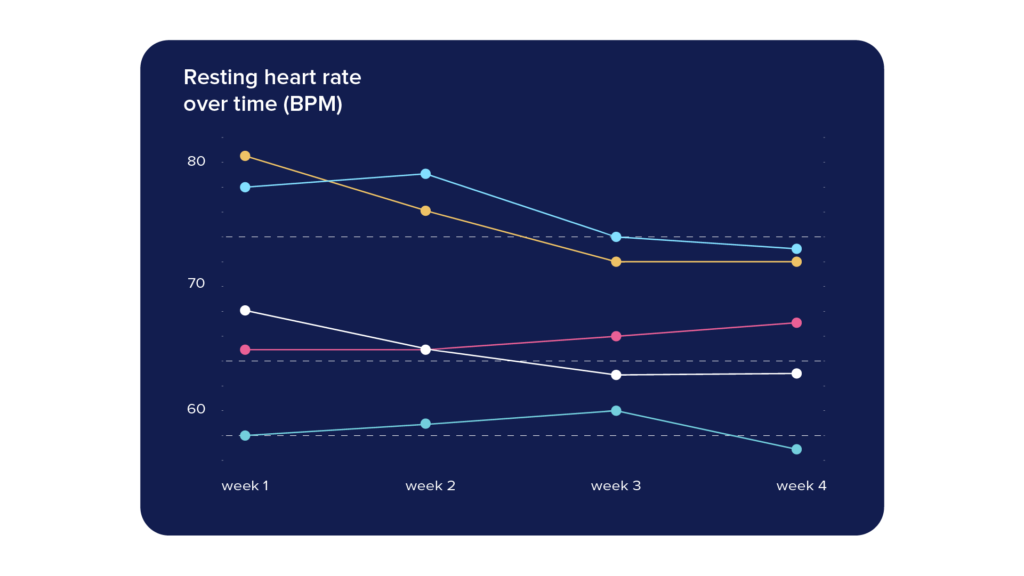
Figure 3: This graph shows the resting heart rate of participants over four weeks.
What’s next?
Stress has a large impact on your sleep. The Sleep Robot can help initiate a relaxation response with coherent breathing exercises. These exercises give you a calm mind and prepare you for bed. In our experiment, we observed effects on heart rate which is an important parameter for evaluating stress and relaxation factors. We want to keep exploring the effects of breathing exercises with the Sleep Robot on relaxation and sleep.
Somnox is committed to developing products that you can trust. We continually improve our products based upon user experiences and the latest research. Sleep has a large impact on your wellbeing and it is important that we take your health seriously. Therefore, we will keep sharing our learnings with you. Wondering whether Somnox is right for you? Take our quiz and get our free advice.
Learn more about our latest findings: https://somnox.com/blog/research-sci-somnox/
References
- Russo MA, Santarelli DM, O’Rourke D. The physiological effects of slow breathing in the healthy human. Breathe. 2017;13(4):298-309
- Lin IM, Tai LY, Fan SY. Breathing at a rate of 5.5 breaths per minute with equal inhalation-to-exhalation ratio increases heart rate variability. International Journal of Psychophysiology. 2014;91(3):206-211
- Jänig W. Autonomic Nervous System. In: Schmidt R, Thews G, ed. by. Human Physiology. 2nd ed. Berlin: Springer; 1989. P.333-370
- Buijs RM. The autonomic nervous system: a balancing act. Handb Clin Neurol. 2013;117:1- 11
- Pal GK, Velkumary S, Madanmohan. Effect of short-term practice of breathing exercises on autonomic functions in normal human volunteers. Indian J Med Res. 2004;120(2):115-21
- Sunil Naik G, Gaur G, Pal G. Effect of Modified Slow Breathing Exercise on Perceived Stress and Basal Cardiovascular Parameters. Int J Yoga. 2019;11(1):53-58
- Jerath R, Beveridge C, Barnes V. Self-regulation of breathing as an adjunctive treatment of insomnia. Front Psychiatry. 2018;9(780):1-7
- Pinsky, M., 2006. Chapter 34 – Heart–Lung Interactions. In: R. Albert, A. Slutsky, M. Ranieri and J. Takala, ed., Clinical Critical Care Medicine. [online] Mosby, pp.369-382. Available at: https://www.sciencedirect.com/science/article/pii/B9780323028448500391
- Steffen P, Austin T, DeBarros A, Brown T. The Impact of Resonance Frequency Breathing on Measures of Heart Rate Variability, Blood Pressure and Mood. Front Public Health. 2017;5(222):1-6

by Baginda Tirtadji | Thursday, December 10, 2020 | Research
Goal
Somnox has performed research into the efficacy of the Sleep Robot in the third quarter of 2020. The aim of this study was to investigate whether the Sleep Robot would mitigate the participants’ insomnia related sleep problems.
Method
Participants were consumers that bought a new Sleep Robot via one of Somnox’ commercial channels. In total, 24 participants completed the study. They were asked to use the Sleep Robot at home like they normally would. Insomnia related sleep problems were evaluated at three time points: before Sleep Robot use, after two weeks and after a month of robot use (approximately 30 days).
Insomnia related sleep problems were evaluated using the validated SCI questionnaire. This questionnaire consists of eight items:
- How long does it take you to fall asleep?
- If you then wake up during the night, how long are you awake for in total?
- How many nights a week do you have a problem with your sleep?
- How would you rate your sleep quality?
- Thinking about the last month, to what extent has poor sleep affected your mood, energy or relationships?
- Thinking about the last month, to what extent has poor sleep affected your concentration, productivity or ability to stay awake?
- Thinking about the last month, to what extent has poor sleep troubled you in general?
- How long have you had a problem with your sleep?
The SCI questionnaire was sent to new Somnox clients before Sleep Robot use (baseline), after two weeks of Sleep Robot use and after one month of Sleep Robot use. Based upon answers to the questions mentioned above, the SCI score was calculated. This score was representative for the severity of insomnia related sleep problems. The baseline SCI score was compared with the SCI score after two weeks and after one month. Furthermore, the answers to the questions were evaluated separately. Per question, baseline results were compared with results after one month of Sleep Robot use.
Results
SCI score
After two weeks, 42% of participants experienced an improvement of SCI score and after one month this was 71% of participants. Between week 2 and one month, 63% of participants improved their SCI score.
SCI questions separately
After one month of Sleep Robot use, the total time of awakenings during the night improved from 46-60 minutes to 16-30 minutes (question 2). Moreover, the number of nights during which participants experienced sleep problems decreased from 5-7 to 4 (question 3). Participants were more energetic and improved their mood during the day (question 5). Answers to the other questions of the SCI questionnaire are listed in the table below.
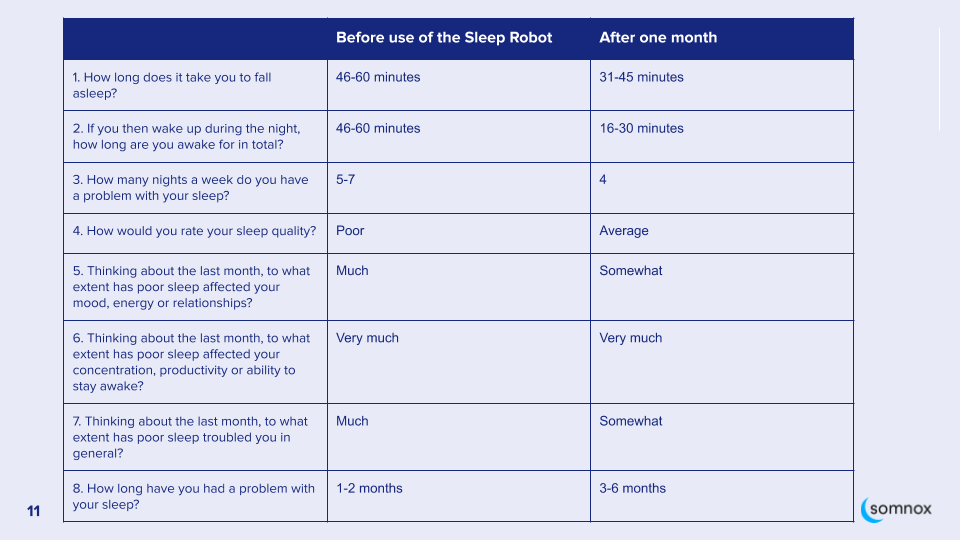
Conclusion
Based upon the results of the SCI questionnaire, we can state that the Sleep Robot improves
- the time it takes to fall asleep
- the total time of awakenings during the night
- sleep quality
- energy and mood during the day
Looking at the SCI score overall, 71% of participants improved their score after one month meaning that the Sleep Robot helped mitigate insomnia related sleep problems. Participants experienced the biggest improvement between week two and one month. Thus, Somnox can advise their users to use the Sleep Robot at least for one month to experience sleep improvements. This is in line with other sleep- and behavioural therapies. Future studies must focus on evaluating the effect over a longer period of time.

by Baginda Tirtadji | Thursday, November 7, 2019 | Research, Sleep
There is absolutely nothing as frustrating as going to sleep for the evening and waking up the next morning feeling even more tired than when you went to bed. In this article we will take a look at why you are waking up tired every morning and what you can do to help yourself get a good night’s sleep.
A Few Reasons Why You Are Waking Up Tired
● Thyroid Disease – A possible reason why you could be waking up tired in the mornings could be because you are suffering from fatigue. Additionally, you may experience moodiness, weight gain or muscle and joint pain.
● Adrenal Fatigue – This condition is caused by a hormonal imbalance that causes your body to excrete an excess of cortisol and adrenaline.
● Chronic Fatigue Syndrome – This is a condition similar to adrenal fatigue but it is more common in women than in men.
● A Sedentary Lifestyle – You may be surprised that sitting around not doing anything could be making you more tired. Not moving enough will cause you to feel tired, sluggish and you may even experience mood imbalances.
● Depression – One of the most common symptoms of depression is feeling tired and fatigued.
● Inconsistent Sleep – If you do not get a solid eight hours of sleep each night you may experience fatigue when you wake in the mornings.
● Anemia – Having insufficient levels of iron in your blood could cause you to feel tired no matter how long you sleep at night.
● Dehydration – This one may be quite surprising; however, dehydration is one of the most common reasons that you feel tired.
What You Can Do To Fix It
Control your breath
Use breathing techniques to breathe slower. This helps tremendously with calming down and will impact how quickly you fall asleep. You can follow the 4-7-8 routine:
- Exhale completely through your mouth, making a whoosh sound.
- Close your mouth and inhale quietly through your nose to a mental count of four.
- Hold your breath for a count of seven.
- Exhale completely through your mouth, making a whoosh sound to a count of eight.
This is one breath. Now inhale again and repeat the cycle three more times for a total of four breaths. If you are not getting enough air, try it with 4-4-4 seconds first.
Try our Somnox sleep solution
Have you already tried everything to fall asleep? Breathing is your answer. We invented the Sleep Robot that guides you towards relaxed breathing and helps you fall asleep faster, worry less and wake up rested. Our Sleep Robot is comfortable, easy to use (also in the dark!) and therefore feels like a sleep-buddy. Through relaxed breathing, the Sleep Robot can help you calm your breathing and unwind.
Because of the subtle sounds and movements the robot makes, that mimic human breathing, it is easier for you to relax. So: no longer staring at the ceiling all night, worrying about stuff. Not only do you fall asleep feeling more relaxed, you’ll also sleep faster and longer. All that using no medicine at all: the Sleep Robot works in a totally natural way. With the Sleep Robot next to you, you feel safe and secure. It keeps you company and helps to distract your thoughts from the things that keep you up at night.
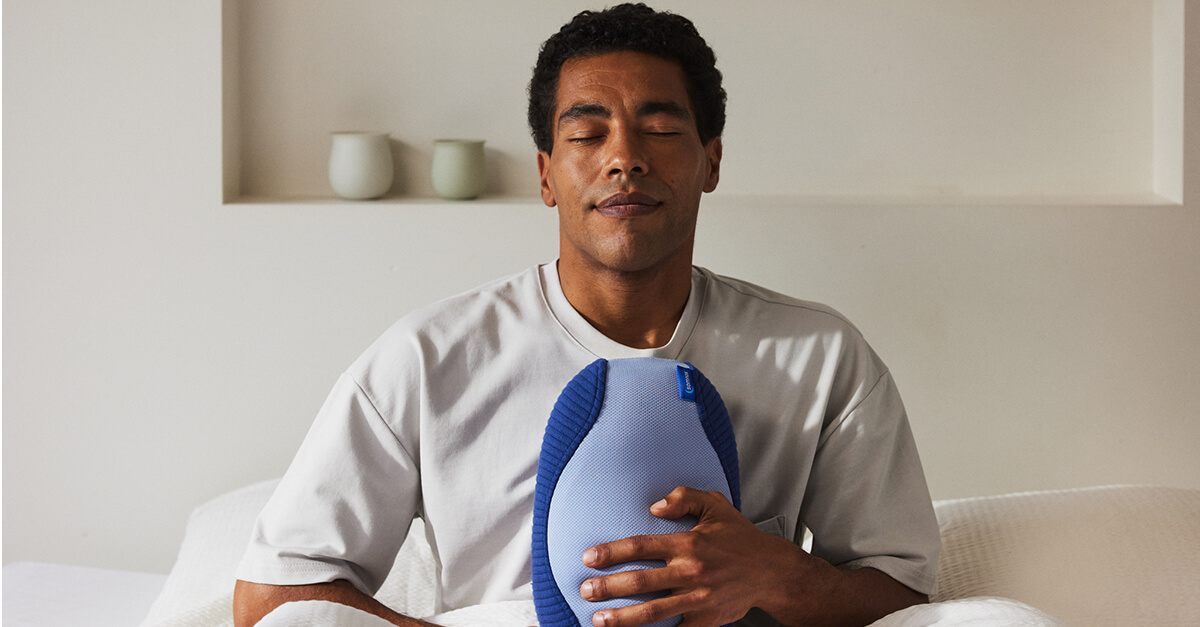
How does it work? The Somnox Sleep Robot guides your breathing. By holding the robot, you feel the breathing rhythm that the Sleep Robot produces. You will (subconsciously) adapt your own breathing to it. By slowing down your breathing you will calm down and relax. The Sleep Robot has sensors that can detect your breathing rate. This will be used to generate a breathing pace that is synchronised to you to slowly guide your breathing towards slow deep breathing techniques proven to reduce stress and anxiety. The Sleep Robot can play soothing sounds, nature sounds, or white/pink noise sounds. These sounds have a relaxing effect and can enhance the calming effect of the Sleep Robot.
Wondering whether Somnox is right for you? Take our quiz, and get our free advice.
Improve The Quality Of Your Sleep
When you wake up feeling tired in the mornings it is time to look at your routine and decide what you can change so that you can get a restful night’s sleep. A good example of routine is to go to sleep at the same time every night. It is also a good idea to stop drinking caffeine after 4 in the afternoon and remove anything from your bedroom that may be disturbing you.
Have a screen-free hour before bed
Falling asleep is the process of your body and mind winding down after a stressful day. You can decide whether that process starts an hour before you go to bed, or whether that process only starts after you put your phone away one hour into laying in bed. Looking at screens like your laptop or smartphone strains your eyes and prevents your body from producing Melatonin, which regulates your sleep-wake cycle. Instead of browsing the Internet, use that hour for relaxing activities. You can read with dim light, draw, meditate, write or do something else that helps you calm down. Give your body a chance to wind down so you can fall asleep quickly.
Count backward from 200
This is a simple but effective technique. Mentally count from 200 backward with your eyes closed. Counting sheep is a great alternative to this and great for boring yourself to sleep.
The act of focusing on something calming prevents yourself from getting excited because you’re thinking about doing things. Research shows that just thinking about an activity like playing tennis is enough to raise your blood pressure. Thinking of mundane and calming scenarios that don’t involve yourself moving is best for calming down.
Use the 2-minute technique
The US military developed this technique to allow jet pilots to fall asleep quickly between missions. It works like this:
- Relax all the muscles in your face, including tongue, jaw and the muscles around the eyes
- Drop your shoulders as far down as they’ll go, followed by your upper and lower arm, one side at a time
- Breathe out, relaxing your chest followed by your legs, starting from the thighs and working down
Spend 10 seconds trying to clear your mind before thinking about one of the three following images:
- You’re lying in a canoe on a calm lake with nothing but a clear blue sky above you
- You’re lying in a black velvet hammock in a pitch-black room
- You say ‘don’t think, don’t think, don’t think’ to yourself over and over for about 10 seconds.
If you get used to this technique, meaning that you use it every time you fall asleep for multiple weeks, it’ll start working like magic.
I calm my breath down with the 4-7-8 technique for 5 breaths, then I start with this 2-minute routine. If that’s not enough, I’ll either start counting from 200 backward or get up and try again after 15-20 minutes.
Watch your nutrition and caffeine intake
Caffeine affects your body for 4-12 hours after ingesting it. This means that having a coffee at lunch can impact your sleep, even though they are quite a bit apart. Eating can have just as much of an effect on your sleep. Try not to eat anything in the last 2 hours before going to bed. You can still drink some water if you need to. Getting the right nutrients has major effects on your life so it is always worth sorting that out.
Carbohydrates leave you feeling tired and sluggish. You will be surprised by the massive difference in your quality of sleep if you switch out processed carbs for whole grain options that have a low glycerin value. These types of foods will sustain your blood sugar levels for an extended period of time helping your body rest while you sleep.
Improve your sleeping environment
Is your room too warm? Does light get into your room at night? Is there a lot of noise coming in from outside? What about your pillows and your mattress?
All these factors impact the quality of your sleep and you should look into all of them. Sleep takes up roughly one-third of your day and will continue doing so for the rest of your life, so it is worth optimizing.
Generally, an optimal sleep environment is:
- Cool
- Dark
- Quiet
- Comfortable
- Stress-free
- Only used for sleep or intimate relations
Stay Hydrated
Dehydration can contribute significantly to feelings of fatigue. Make sure that you are drinking at least eight large glasses of water every day. Additionally, if you lead an active lifestyle, are pregnant or nursing you should be drinking more to keep yourself hydrated. It is also a great idea to keep a bottle of water on your bedside table so that you can sip on the water during the night.
Exercise
Getting a little exercise during the day will help you sleep much better at night. Not only does regular exercise boost your general health but it helps to oxygenate your blood. This will send more nutrients to your brain and heart helping them work more effectively and helping you sleep. As it uses up your energy In turn, you will sleep more and end up with more energy the next day. Fortunately, you do not have to jog five miles a day to attain these benefits. A simple 30 minutes of moderate exercise is enough to keep your body healthy and help you sleep. If you’re not into sports, you should still at least take a walk or do some lighter exercising.
Herbal Tea
If you find yourself waking up tired it is a good idea to cut out caffeine from your diet. Fortunately, this does not mean that you have to give up on warm drinks entirely. Simply choose herbal teas to enjoy in the evening instead of your usual cup of coffee. Chamomile tea is a great option if you struggle to sleep as the soothing properties of this herb has been used to help people go to sleep for centuries. Alternatively, you could opt for a cup of peppermint tea if you prefer something with a refreshing taste.
Look into other factors
Stress, kids, drugs/alcohol, sleep apnea, insomnia, and other issues can have a major effect on your sleep. All of those things affect your energy, mood, happiness, and productivity. Seek help for these kinds of issues. Home remedies and techniques can’t fix everything and there are people who work on these things professionally.
Other ways to wake up less sleepy
Waking up in the morning can be challenging, especially if you didn’t quite get enough sleep. Here’s a list of things you can do to make sure you get out of bed:
- Have only one alarm. Multiple alarms only encourage you to ignore them and make you more likely to oversleep.
- Use the 5-second rule. As soon as you hear the alarm you go 5-4-3-2-1 (out loud or in your mind) and you get out of bed. Don’t give your mind time to convince you to stay in there.
- Get out of bed. Getting out of bed is usually the hardest part, but as soon as you’re not in there anymore it is much easier to stay awake.
- Have a morning routine. I always drink a glass of water right after waking up, then I take a cold shower. A set routine can help override the emotional part of your brain.
- Turn the light on. Light tells your body that it is daytime and helps ease the sleepiness.
- Use a smart alarm clock. There are lots of different models of clocks that need more than just a press of a button to turn off. Whether you need to solve a puzzle first or go to your bathroom to take a picture, they’ll usually wake you right up. (I use the free app Alarmy for this)
- Make staying in bed uncomfortable. You can achieve this by opening the window blinds or turning the heat on automatically each morning so the bed gets too warm.
After a few days of adjusting to your new schedule, you should be able to wake up even without a clock most of the time. If you oversleep a lot, you might need to adjust your sleep time and add half an hour.
If you are looking for more great information regarding the latest health news you should click here for more.

by Baginda Tirtadji | Wednesday, October 23, 2019 | Research, Sleep
Sleep disorders continue to affect a lot of people across the world, in fact, more than 70 million people just in the USA struggle from them. The field of sleep is complex and there are so much research and studies being conducted to better understand the symptoms, causes and best treatments for sleep disorders. There are several organizations that are at the forefront of studying sleep and advancing the field of sleep medicine.
Today, there are over 80 recognized sleep disorders, where some are more common than others. People with various types of disorders may constantly struggle to sleep, have trouble staying asleep, wake up in the middle of the night and are unable to return to sleep and others wake in the morning feeling tired. Here are the most common sleep disorders that could disturb your quality night sleep.
Insomnia
Insomnia is one of the most common sleep disorders. It is known, that about 10 per cent of Americans reported suffering from chronic insomnia. Insomnia is characterized as having difficulty falling asleep and staying asleep. People with insomnia are likely to experience one or more of the following symptoms:
- Difficulty falling asleep
- Waking up in the middle of the might and having trouble returning to sleep
- Waking up too early in the morning
- Feeling tired upon waking
Insomnia can be categorized into two types:
- Primary insomnia: this is insomnia that is not directly associated with any other health condition.
- Secondary insomnia: this type of insomnia means that the person is having sleep problems that are associated with something else such as an illness or the medication or alcohol problems, etc.
Insomnia is also categorized as acute and chronic insomnia.
Acute insomnia is short-term while chronic can last a long time. Acute insomnia can actually last from one night to a few weeks. Generally, one is diagnosed with chronic insomnia if it lasts for at least three nights a week for three months or longer.
Good sleep habits can be used for preventing and curing acute insomnia.
Treatment for chronic insomnia starts by first treating any underlying conditions that are causing insomnia. Behavioural therapy is another remedy for this sleep disorder.
Obstructive Sleep Apnea
Obstructive sleep apnea is another prevalent sleep disorder. Many people with this sleep disorder do not even realize they have it. Obstructive sleep apnea occurs when something partly or fully blocks the upper respiratory system.
When that happens, a person’s breathing stops for a few seconds during the night. The blockage makes the diaphragm and the chest muscles to strain to open the blocked airway and pull air into the lungs. A person resumes breathing with a loud gasp or body jerk.
Obstruction of the airway can lower the flow of oxygen to vital organs thus leading to irregular heart rhythms.
Obstruction of the upper respiratory system can happen several times an hour for several seconds at a time. This, therefore, does not allow the brain time to get into deeper phases of sleep where the restorative process happens which prepares you for the next day. As a result, a person wakes up in the morning feeling tired.
There are several symptoms of sleep apnea including fatigue, night sweat, and headaches in the morning, dry mouth when you wake up, snoring and restlessness during sleep among others.
Sleep apnea can be treated by avoiding alcohol, using nasal sprays, sleeping on your side, oral devices and surgery if necessary.
REM Sleep Behaviour Disorder
Sleep has two distinct cycles, non-rapid eye movement (NREM) and rapid eye movement (REM). During REM sleep, there is irregular breath, blood pressure rises and the muscles are relaxed. A person with REM sleep behaviour disorder experiences sudden and intense movement during sleep. People with this sleep disorder tend to act out their dreams and they might talk, yell, punch, kick or jump out of bed.
The exact cause of REM sleep behaviour disorder is unknown, but it has been highly associated with alcohol or sedative-hypnotic withdrawal. Medication is often advised as a treatment for this sleep disorder.
Narcolepsy
Narcolepsy is a neurological disorder that inhibits the ability of the brain to control sleep and wakefulness. People with narcolepsy experience excessive daytime sleepiness whereby they fall asleep unexpectedly during the day. The unexpected sleep attacks can happen during any activity at any time of the day.
People suffering from narcolepsy typically have their REM sleep happen almost immediately in the sleep cycle and happens in different periods during the waking hours.
The exact cause of narcolepsy is not known, but there are scientists who associate it with the genes that control the production of chemicals in the brain. The chemicals may signal sleep and wakefulness cycles.
The most common symptom of narcolepsy is excessive daytime sleepiness which really interferes with your normal activities and can be very dangerous when you’re driving. One may also experience hallucinations and sleep paralysis.
There is no cure for narcolepsy, but its most common symptom, excessive daytime sleepiness can be controlled with drug treatment such as amphetamine-like stimulants.
Restless Leg Syndrome
Restless leg syndrome is a neurological disorder that causes one to have irresistible urge to move the limbs, usually when resting. People with RLS, experience sensations in the legs which are often described as creeping, aching, itching, pulling or burning. That’s why the only relief is the movement of the legs.
Restless leg syndrome can impact your sleep because of the constant urge to move your legs, and that’s why it has been classified as a sleep disorder. With this disorder, it becomes difficult to fall asleep and stay asleep.
RLS can lead to sleep loss can lead to other symptoms of sleep deprivation caused by other sleep disorders including reduced quality of life, memory loss, cognitive impairment, fatigue and excessive sleep disorder.
Regular exercise is a good treatment for RLS. Also if you are found to be having an iron deficiency, iron supplements will be prescribed. Caffeine can intensify RLS, so it is important to avoid caffeine-containing drinks as well as alcohol.
What to do if you have a sleep disorder
If you believe you’re suffering from a sleep disorder you should talk with your doctor about your symptoms. If the symptoms are signs of a sleep disorder, the doctor will prescribe relevant drugs if necessary or refer you to a sleep clinic.

by Baginda Tirtadji | Wednesday, October 23, 2019 | Research, Sleep
How much do we really know about sleep? We go to sleep every day for several hours, without thinking about how that process works. Sleeping is essential as breathing, and no matter how long we try to stay awake, eventually we will fall asleep. While we are sleeping, many vital processes are going on in our body, so our brain is not really resting, it is actually bursting with activity.
Have you ever wondered how do we fall asleep, and what happens in our brain when we start feeling tired? For a long time, this was one of many sleep-related mysteries. There is no such thing as a magical button or brain’s sleep switch to turn the lights off in our brain. However, recently, researchers from Aarhus University and the University of Oxford managed to make significant progress in this field with their international study about brain dynamics and transitions during Non-REM sleep and periods of wakefulness.
How Much Do We Know About Sleep so Far?
During our sleep, every 90 to 120 minutes, we go through one sleep cycle, meaning that over the course of one night, we complete four or five sleep cycles. The first one is always the shortest, and it lasts around 90 minutes, after that every next one will last from 100 to 120 minutes. Every sleep cycle consists of four different stages of sleep.
Once we start falling asleep, first we go through three stages of Non-REM sleep, and then we fall into the REM stage. Stage 1 of Non-REM is the drowsy one, it does not last long, and it can be described as light sleep, or transition from wakefulness to sleep. You can still hear sounds, or be easily awoken, although your brain has stepped into sleep, you are not entirely aware that you are sleeping.
After that comes the stage 2, which lasts significantly longer, making around 40-60% of our sleep time. This stage is also the stage of light sleep, but it is not so shallow as it is in the first stage. During this phase, our brain is processing memories and emotions, our metabolism is regulating, so there is still a lot going on, while our heart rate and breathing are slowly decreasing.
Stage 3 lasts longer in children, but in adults, it is quite short, this stage of deep sleep is also known as restorative. This is when our body and muscles get relaxed, and our body produces growth hormone, regulates its immune system; basically, it nurtures itself from the inside. Together, these three stages last roughly around 90 minutes, after that comes the REM sleep.
While during the third stage of NREM it is all about the body, in REM, the central activity occurs in our brain. The REM stage is a phase when our dreams occur, the brain’s activity is at its highest, eyes are moving rapidly, heart rate increases, etc. After REM, the cycle goes again from the beginning, and we go again from the N1 stage through the REM. The first REM is the shortest, but as the night progresses, every next one will last slightly longer.
The Case Study
We spend one-third of our lives sleeping, so it is not surprising that many scientists are fascinated by sleep, and everything related to it. Researchers from Denmark and the US have joined their forces to question one particular problem that is common for both nations, sleep issues since both countries have a high percentage of the population dealing with various sleep disorders. They believe that their findings can be potentially revolutionary in terms of understanding what happens in our brain while we are sleeping. Besides that, it could also be significant for improving treatments and fighting sleep disorders.
So far, our understanding of sleep was based on classifying sleep into different stages; however, how the underlying brain dynamics work was not clear. Dividing sleep into stages is based on many conventions, which are not outdated, but they do not explain precisely enough what is going on in our brain. For the purpose of this study, researchers gathered 57 healthy adults and used Markovian data-driven way of analyzing continuous neuroimaging while participants were falling asleep. At the same time, they were simultaneously performing fMRI and EEG. By doing so, they were able to get a detailed and more precise idea of sleep, as a result of multiple brain networks that communicate through different patterns during sleep.
Their findings showed that our wake-NREM sleep complex is much more complex than we believed, certainly more than the traditional division into stages was suggesting. They used those transitional stages and projected them onto a probabilistic map of different relationships between whole-brain networks. By examining those transitions, researchers noticed a lowered whole-brain dynamics during the NREM stages. They consider that the activity of the brain network does not correspond to the traditional criteria for defining N1 sleep. Also, they find out that the activity in our brain is not on the same level before and after sleep.
However, at the moment, their results are still not enough to understand what is going on in the brain of a person who suffers from insomnia, or what the role of sleep is in mental disorders. But, researchers are hoping that the next steps in their work will provide more information and success.
Key Takeaway
This type of research represents a modern outlook on something that was accepted and became a convention a long time ago. This is a step forward in understanding and getting to know more about the brain’s activity during sleep, and with every further research, it is going to get more and more complicated. Traditional sleep stages are not wrong; they can still be accepted as a simplified version of what is going on. However, with the progress of modern science, we can only expect that researches like this one will eventually break that division and come up with a new one, more detailed, more complicated, and more accurate.
This guest article was written by Selena Thomas. Selena Thomas is a content writer who loves sharing tips on healthy lifestyles. A writer by day and a reader by night, she’s fond of writing articles that can help people in improving both physical and mental health. Also, she loves traveling and inspires people on her blogs.











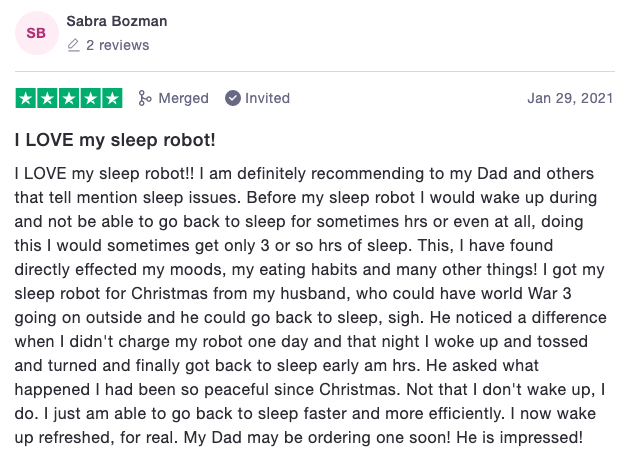



Recent Comments